Class 6 Exam > Class 6 Notes > Mathematics for Class 6 > Quick Revision Mind Map: Mathematics for Class 6
Quick Revision Mind Map: Mathematics for Class 6 | Mathematics for Class 6 PDF Download
| Table of contents |

|
| Patterns in Mathematics |

|
| Lines and Angles |

|
| Number Play |

|
| Data Handling |

|
| Prime Time |

|
| Perimeter and Area |

|
| Fractions |

|
| Playing with Constructions |

|
| Symmetry |

|
| The Other Side of Zero |

|
Patterns in Mathematics
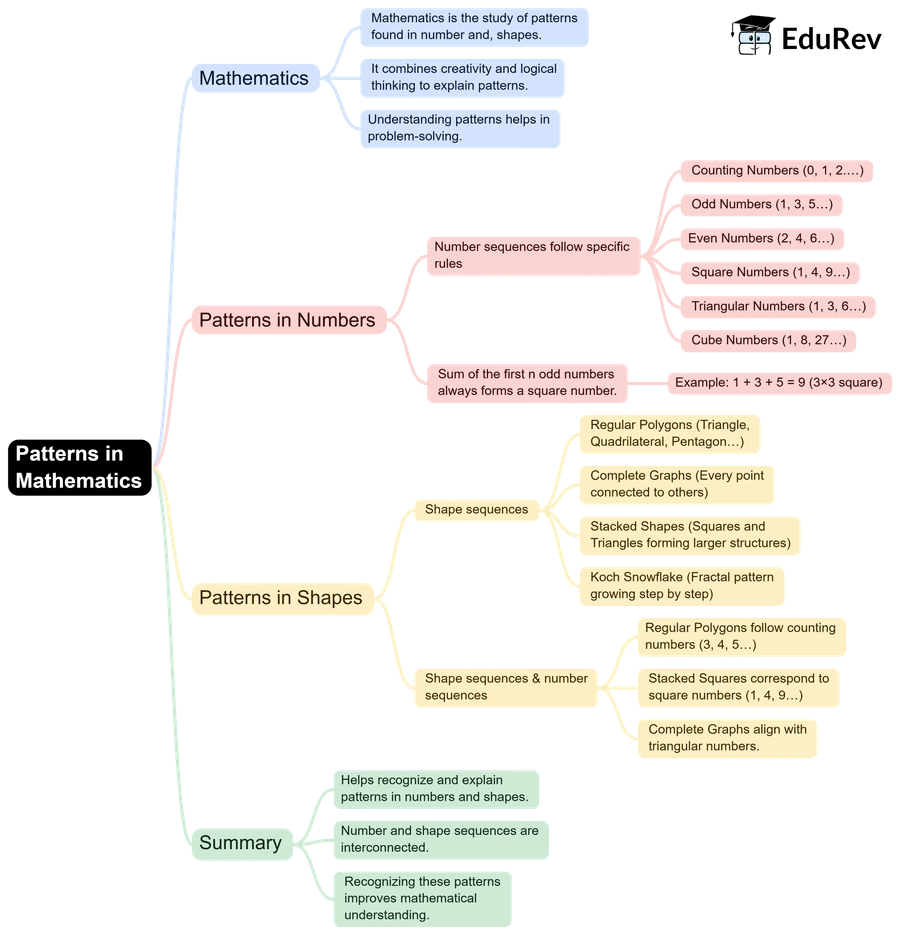
Lines and Angles
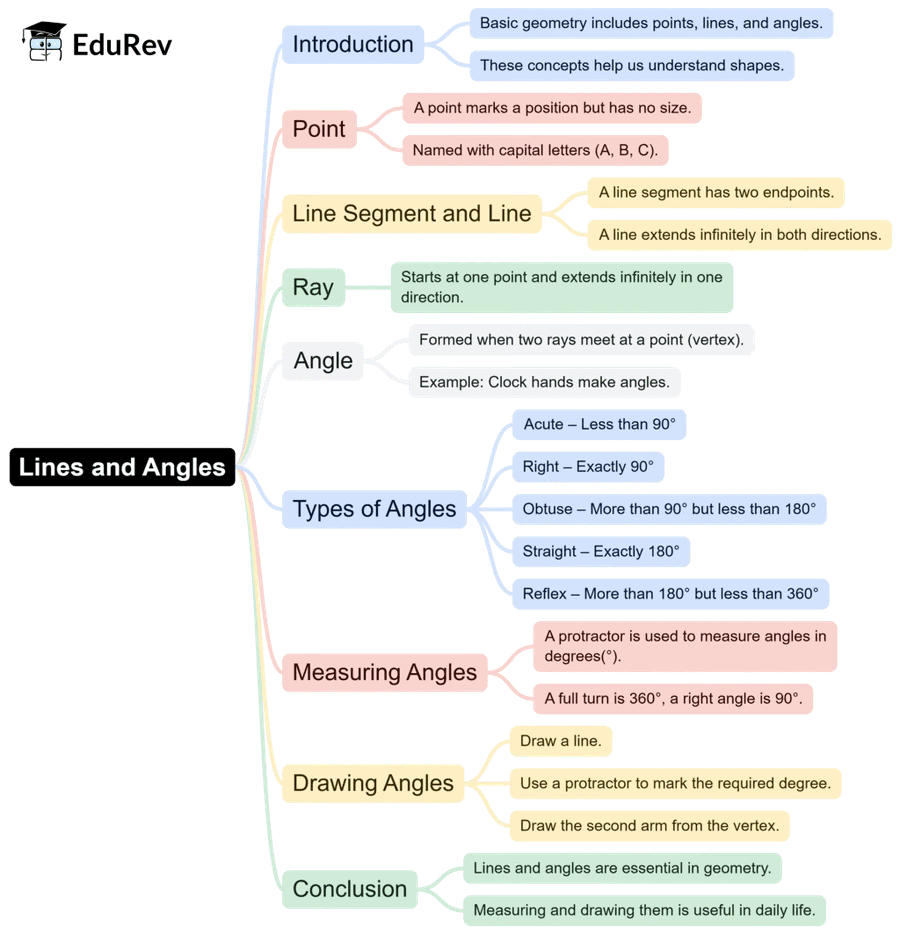
Number Play
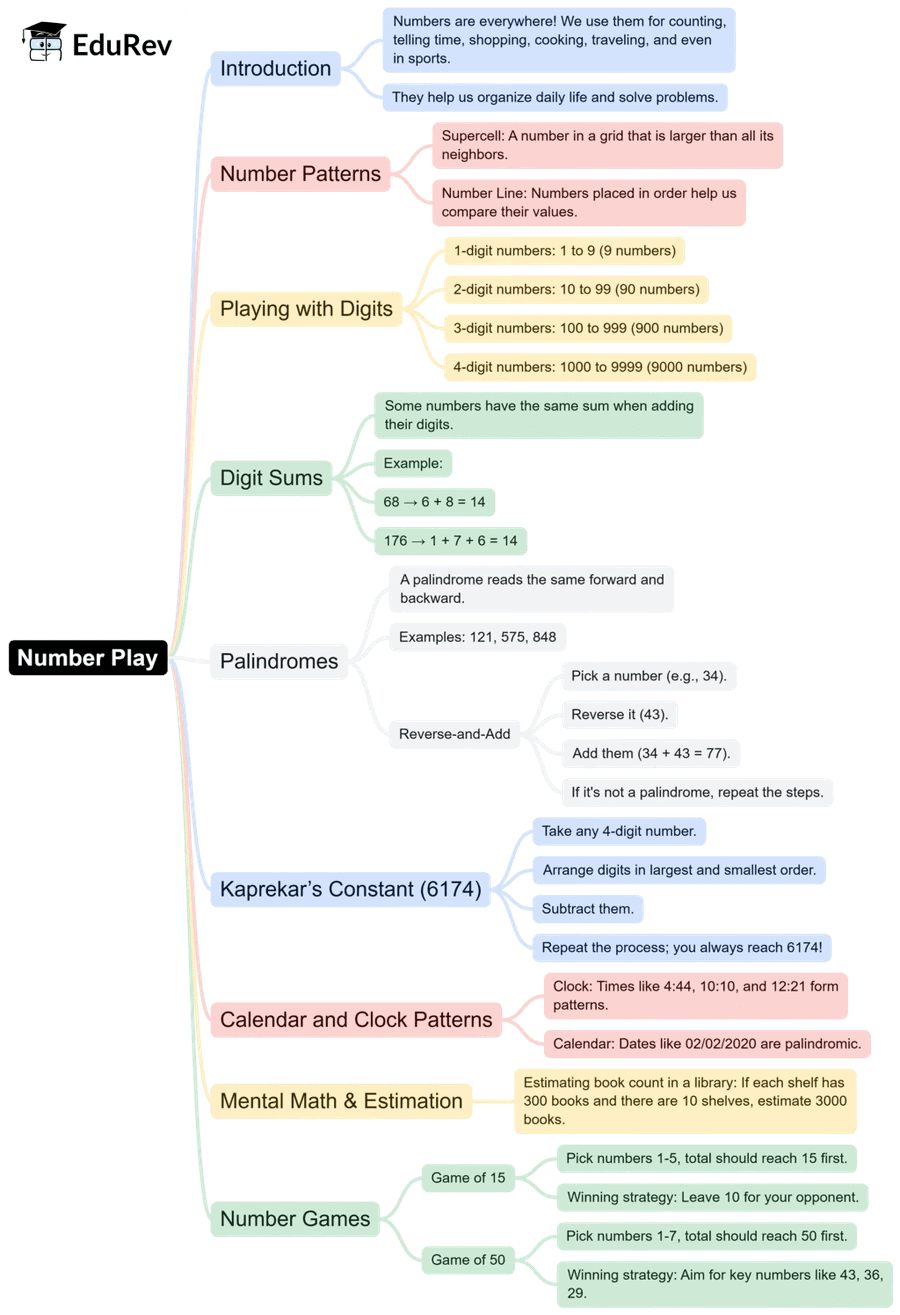
Data Handling
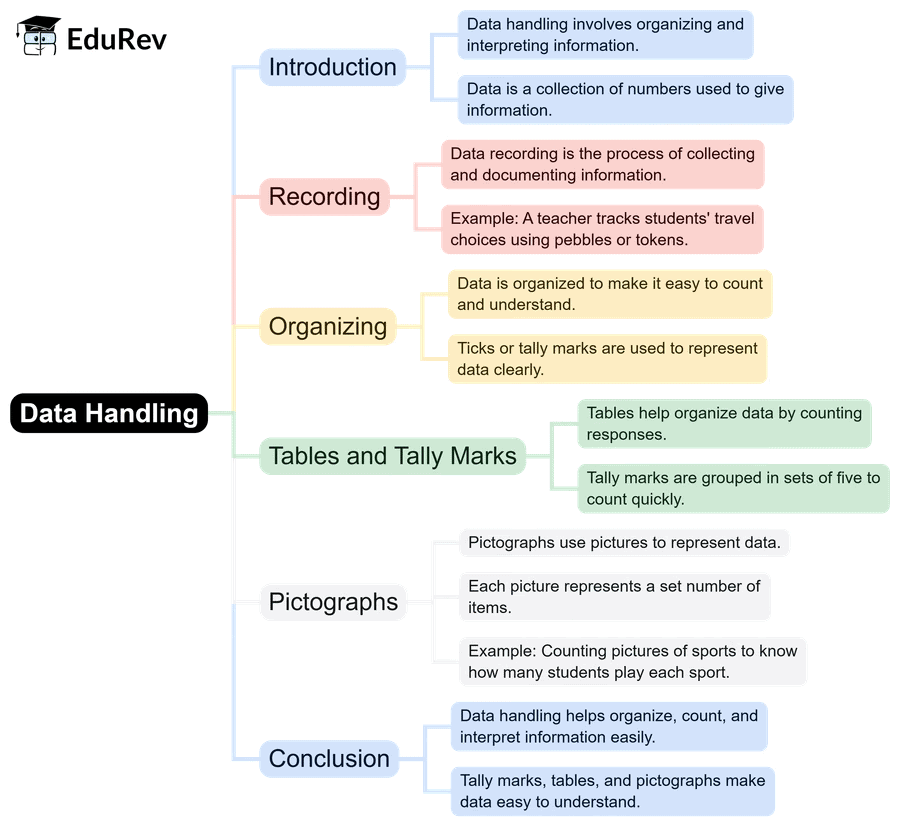
Prime Time
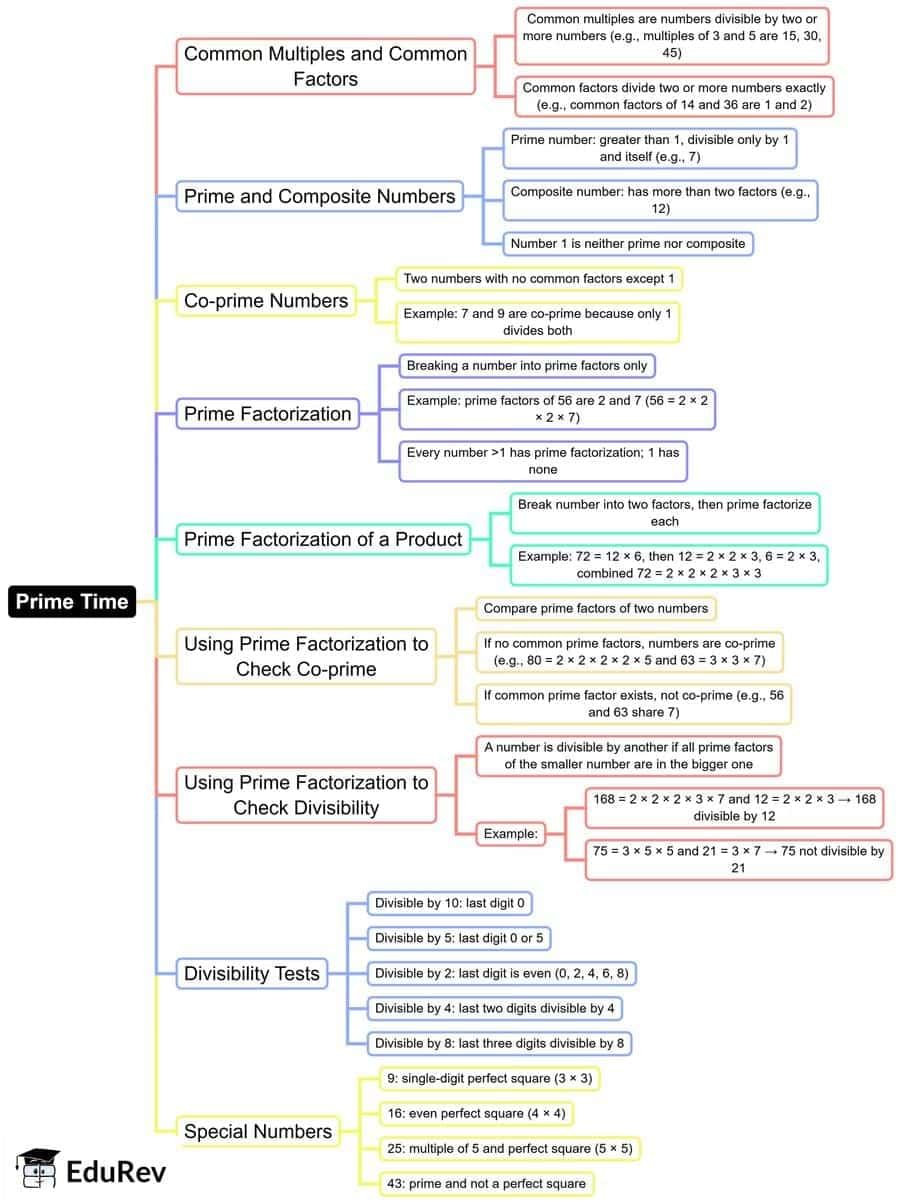
Perimeter and Area
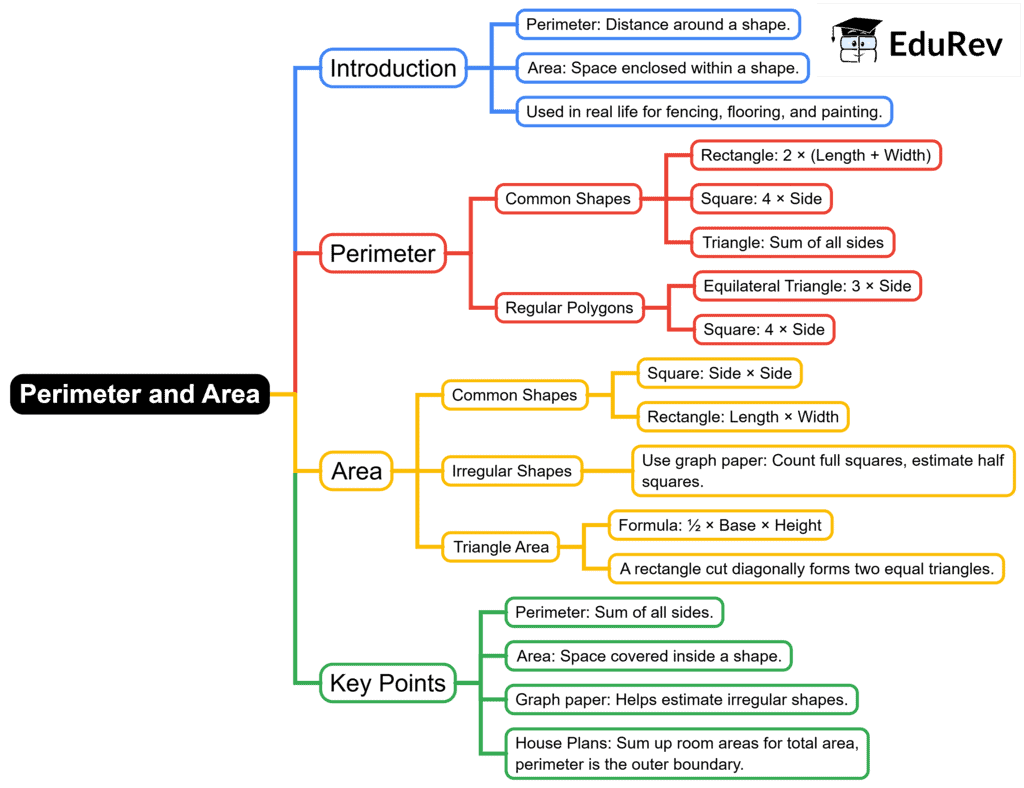
Fractions
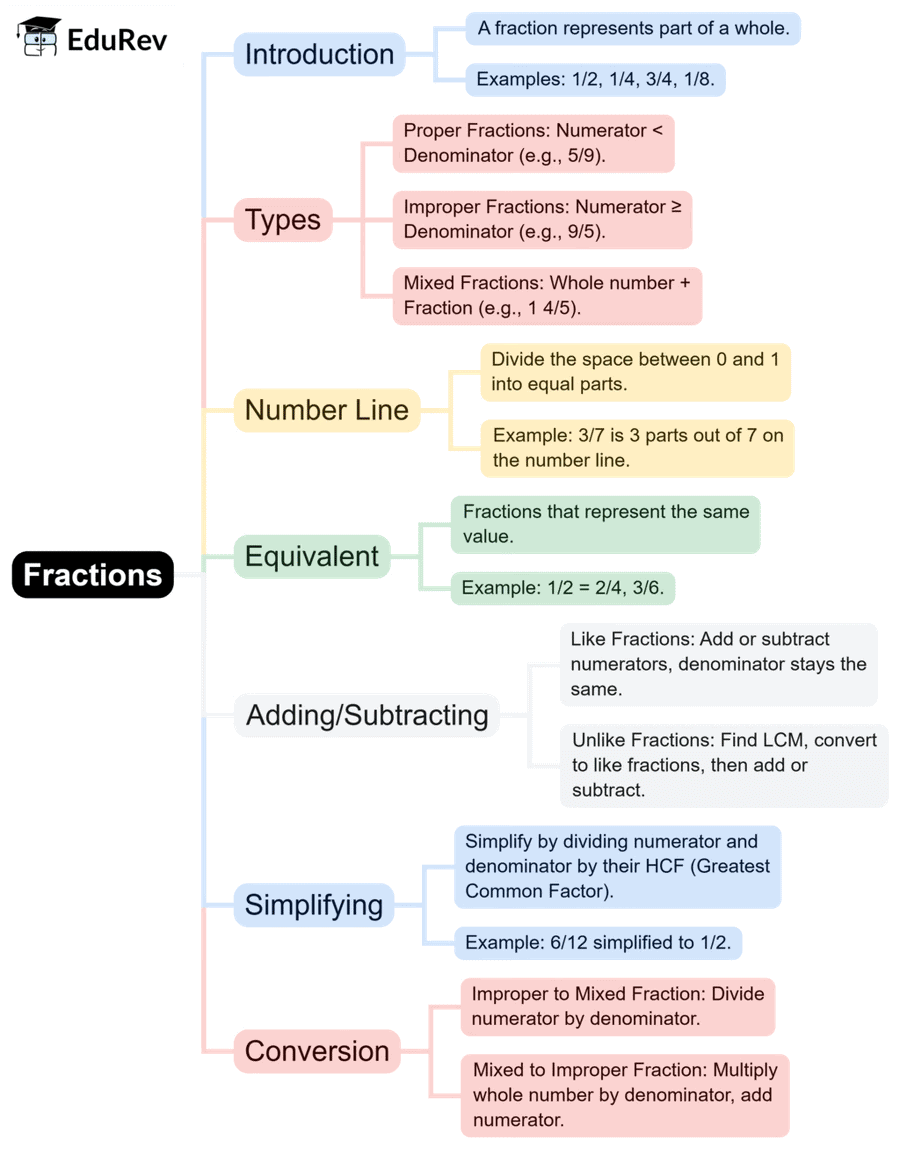
Playing with Constructions
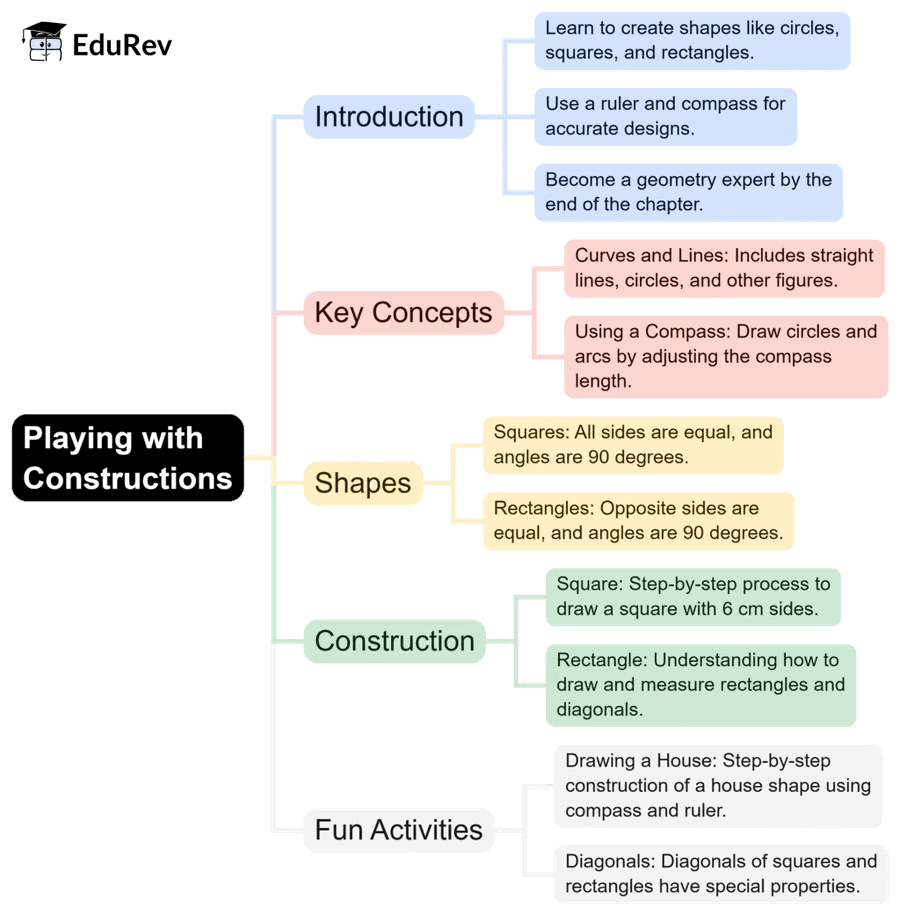
Symmetry
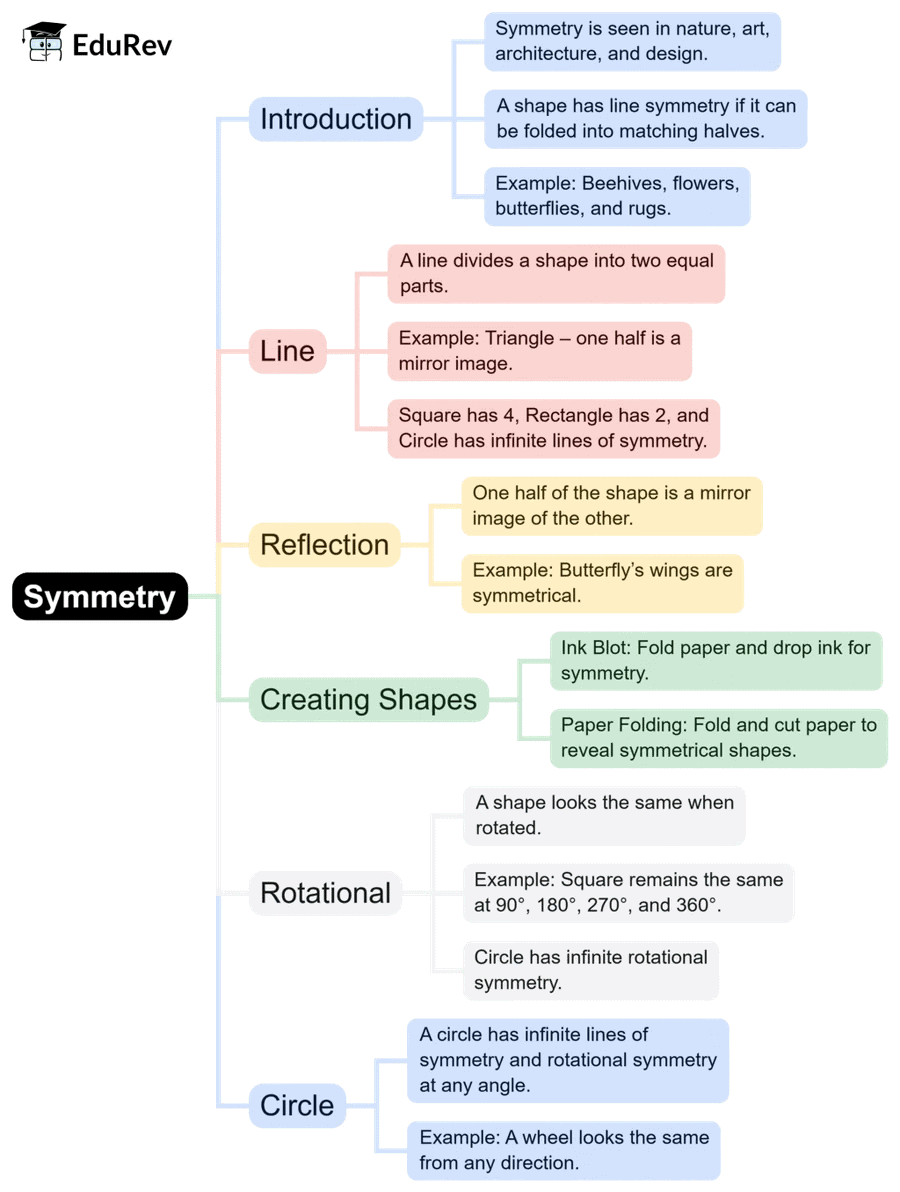
The Other Side of Zero
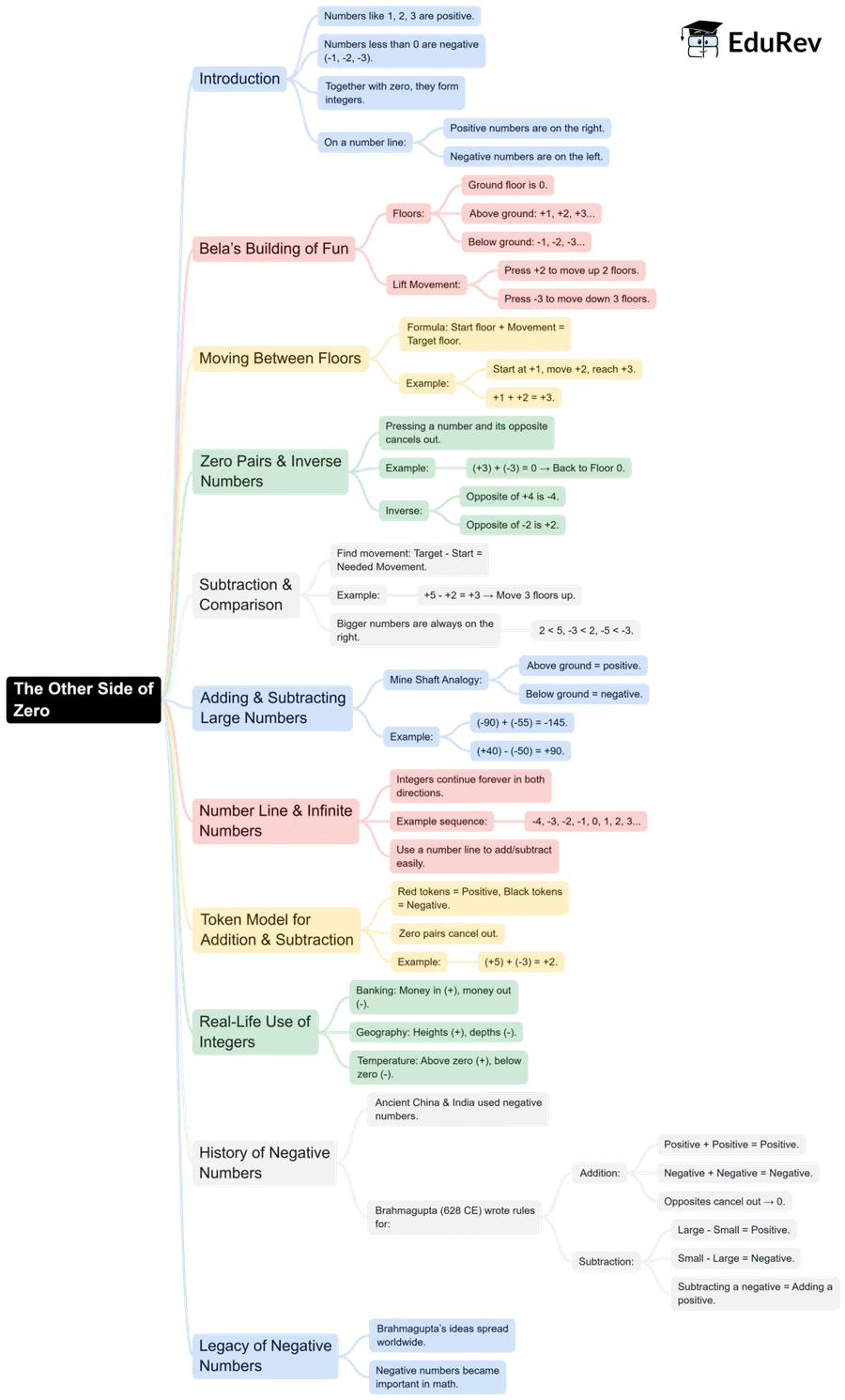
The document Quick Revision Mind Map: Mathematics for Class 6 | Mathematics for Class 6 is a part of the Class 6 Course Mathematics for Class 6.
All you need of Class 6 at this link: Class 6
|
48 videos|334 docs|23 tests
|
FAQs on Quick Revision Mind Map: Mathematics for Class 6 - Mathematics for Class 6
| 1. What are the basic properties of lines and angles that students should understand in Class 6? |  |
Ans. In Class 6, students should understand that lines can be straight or curved, and angles are formed by two rays that meet at a point. Key properties include complementary angles (which sum up to 90°), supplementary angles (which sum up to 180°), and vertical angles (which are equal). Students should also learn about parallel lines and the angles formed when a transversal crosses them.
| 2. How can data handling be effectively taught to Class 6 students? |  |
Ans. Data handling can be taught effectively by introducing concepts such as collecting data, organizing it in tables, and representing it through bar graphs or pie charts. Students should practice interpreting the data they collect and learn to calculate averages, such as the mean, median, and mode, which help in analyzing the data effectively.
| 3. What is the significance of prime numbers in mathematics, and how can Class 6 students identify them? |  |
Ans. Prime numbers are significant in mathematics because they are the building blocks of all numbers; they cannot be divided by any other numbers except for 1 and themselves. Class 6 students can identify prime numbers by testing divisibility for numbers greater than 1 and recognizing that numbers like 2, 3, 5, 7, 11, etc., are prime, while others like 4, 6, 8, and 9 are not.
| 4. How do you calculate the perimeter and area of basic geometric shapes for Class 6 students? |  |
Ans. To calculate the perimeter of a rectangle, students add the lengths of all sides, using the formula P = 2(l + w), where l is the length and w is the width. For the area, the formula A = l × w is used. For a square, the perimeter is P = 4s (where s is the side length) and the area is A = s². Students should also learn to calculate the area of triangles using A = 1/2 × base × height.
| 5. What are the key concepts of symmetry that Class 6 students should learn? |  |
Ans. Class 6 students should learn that symmetry refers to a balance or similarity in shape and size on either side of a line, known as the line of symmetry. They can identify symmetrical shapes like circles and squares and understand that some shapes have more than one line of symmetry. Practical activities, such as folding paper shapes, can help them visualize and understand symmetry better.
Related Searches















